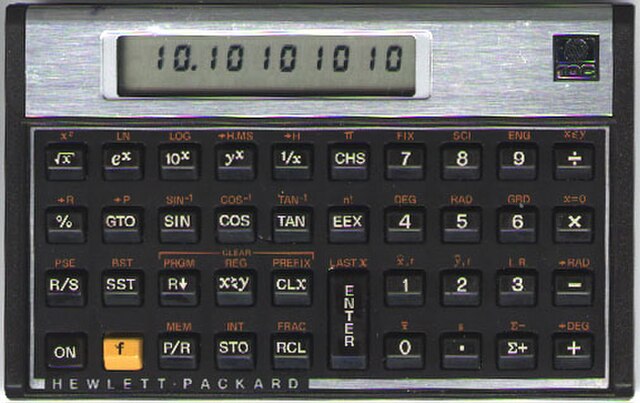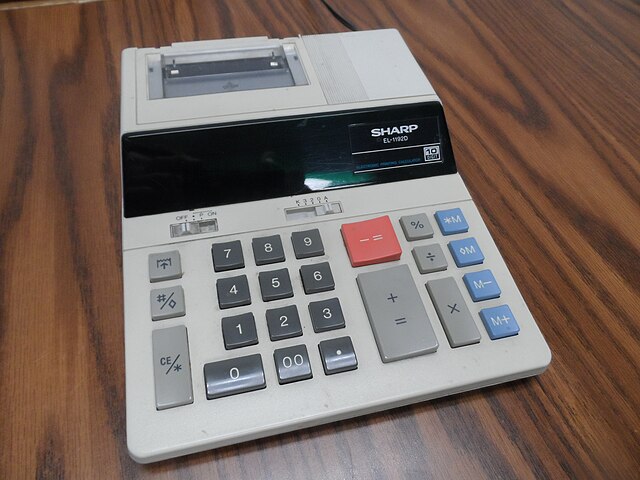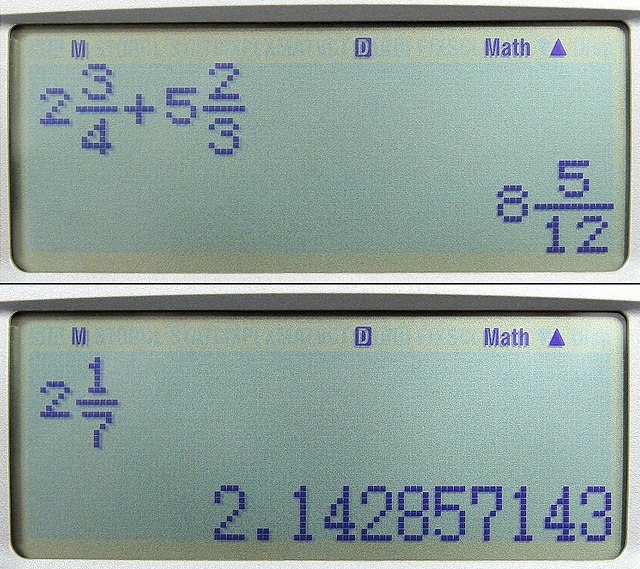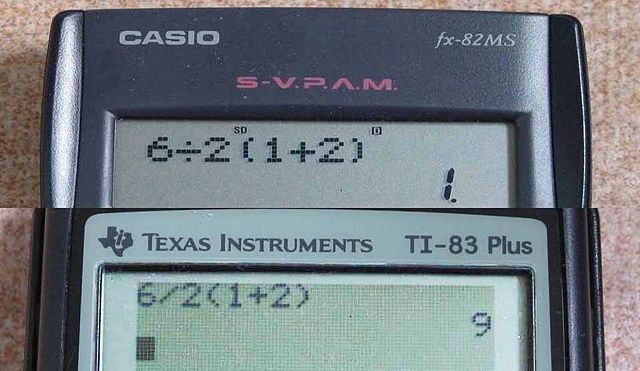Calculator input methods
Videos
Page
There are various ways in which calculators interpret keystrokes. These can be categorized into two main types:On a single-step or immediate-execution calculator, the user presses a key for each operation, calculating all the intermediate results, before the final value is shown.
On an expression or formula calculator, one types in an expression and then presses a key, such as "=" or "Enter", to evaluate the expression. There are various systems for typing in an expression, as described below.

A Sharp scientific calculator using infix notation. Note the formula on the dot-matrix line above and the answer on the seven-segment line below, as well as the arrow keys allowing the entry to be reviewed and edited.

The Hewlett-Packard Voyager series of calculators all use RPN input. The "Enter" key is used here to push the value on the display onto the stack.

This printing calculator made by Sharp uses ten-key notation. Notice the size and placement of the keys, including the extra-large "+/=" and the red "-/=" keys.

A Casio Natural Display scientific calculator displaying mixed fractions and their decimal equivalents in pretty-printing.
Order of operations
Videos
Page
In mathematics and computer programming, the order of operations is a collection of rules that reflect conventions about which operations to perform first in order to evaluate a given mathematical expression.

6÷2(1+2) is interpreted as 6÷(2×(1+2)) by a fx-82MS (upper), and (6÷2)×(1+2) by a TI-83 Plus calculator (lower), respectively.